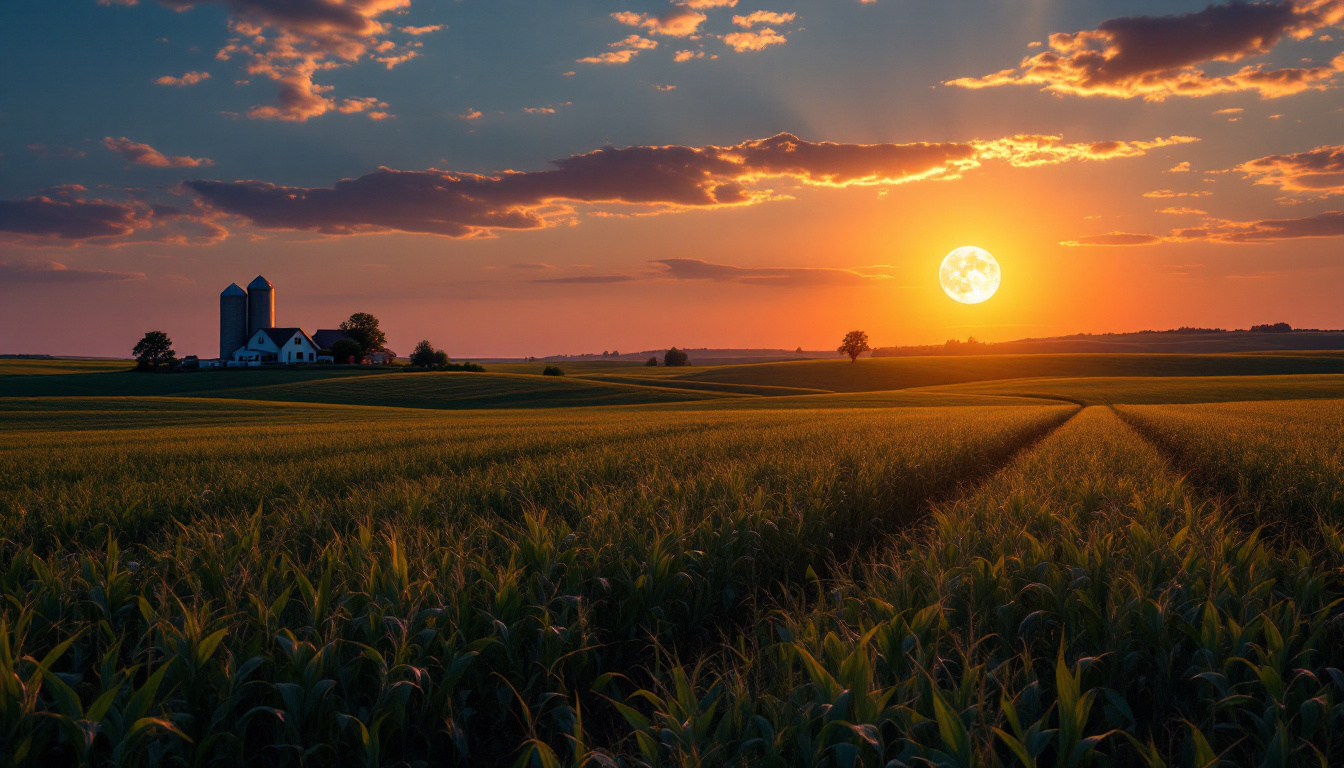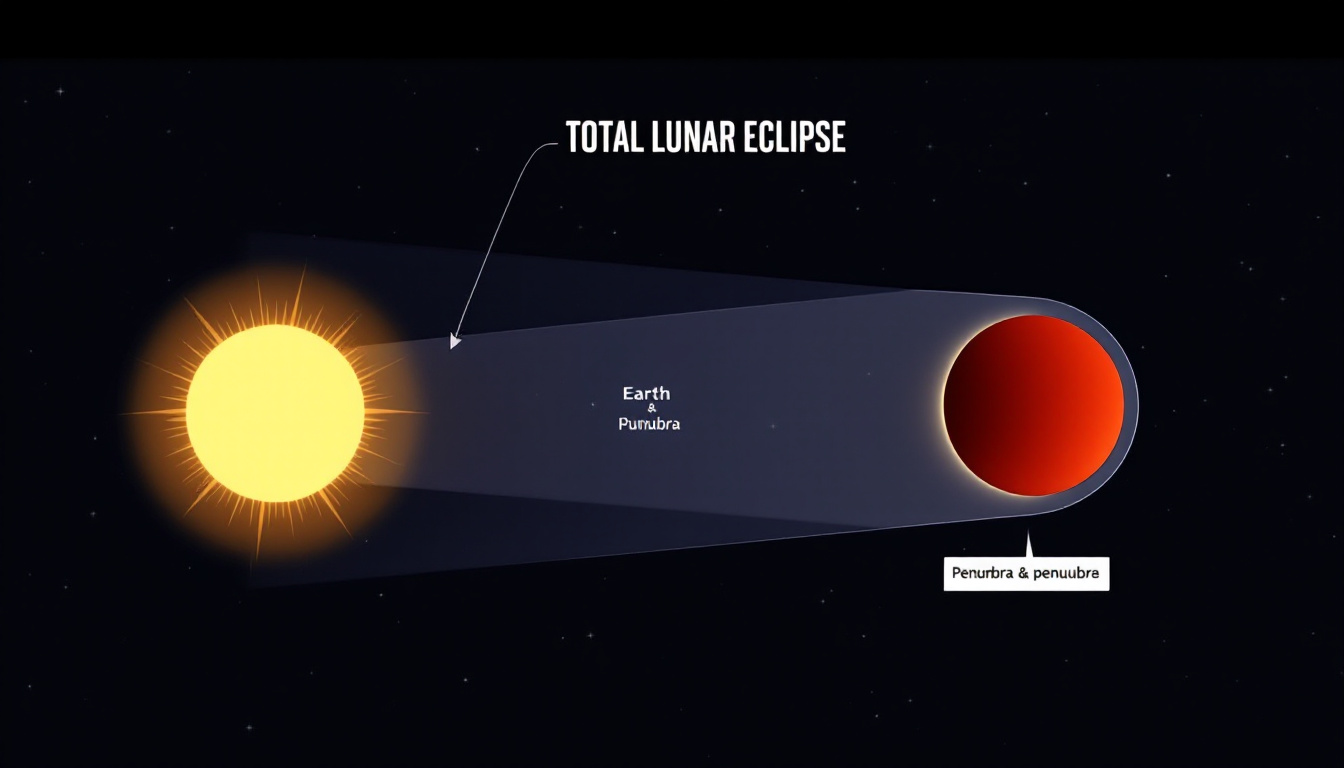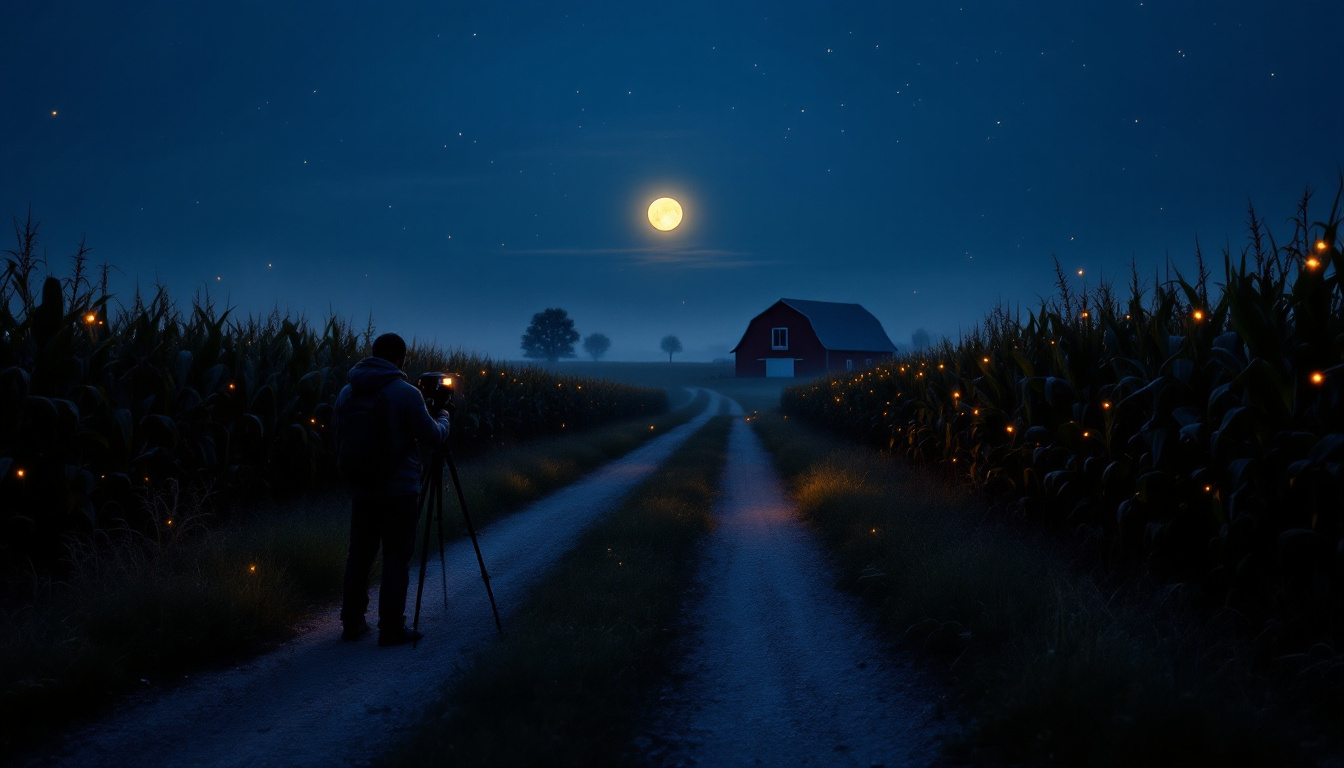September’s full moon is special. It rises during harvest season and often looks bright and bold near the horizon. In 2025, this moon also brings a total lunar eclipse. That turns the moon a deep red, also called a blood moon. Here’s the catch. Iowa, and most of North America, won’t see the eclipse. You can still enjoy a beautiful full moon, though. Below are the key dates, where the eclipse is visible, and simple tips to make the most of the night.
What is the September full moon called?
- Corn Moon: Many farmers harvest corn in early fall. The name comes from that tradition.
- Harvest Moon: If the full moon is closest to the autumn equinox, it is often called the Harvest Moon. Some years that’s in September, other years October gets the title.
- Why it looks big: At moonrise, the moon can look larger near the horizon. That’s an optical illusion. Its size does not change; your brain compares it to trees and buildings.
When is the full moon in September 2025?
Peak date and time: The full moon peaks on the evening of Sunday, September 7, 2025. It will look full on Sept 6 and Sept 8 as well.
Best viewing window: About 30 to 60 minutes after moonrise is ideal. The moon is low, golden, and easy to frame with foregrounds like barns, silos, and trees.

What is a lunar eclipse and a blood moon?
A lunar eclipse happens when Earth moves between the sun and the moon. Earth’s shadow falls across the moon. In a total lunar eclipse, the moon slides into the darkest part of the shadow, called the umbra. Sunlight bends through Earth’s atmosphere, which filters out blue light. That leaves red and orange tones, so the moon turns a copper or brick red. That’s why people call it a blood moon.
Will Iowa see the September 2025 blood moon?
Short answer: No. The eclipse happens during North America’s daytime hours, so the moon is below the horizon for Iowa. People in eastern Australia, New Zealand, parts of Africa, and the Middle East will get the full show. If you’re in Iowa, you’ll still see a bright full moon that night, just not the red eclipse.

When can North America see the next blood moon?
Good news. The next total lunar eclipse visible in North America is expected in March 2026. Mark your calendar now. I can send you exact times for your city, plus a printable timeline and gear checklist when dates are confirmed.
How to make the most of the full moon in Iowa
- Pick your spot: Choose a location with a clear eastern horizon for moonrise and a clear western horizon for moonset. Parks, farm roads, hilltops, and lakes work well.
- Time it right: Check your local moonrise time for Sept 7. Arrive 20 minutes early to scout a composition and adjust settings.
- Look for foregrounds: Cornfields, barns, windmills, silos, bridges, or city skylines add scale and interest.
- Bring binoculars: Even small binoculars show craters and maria on nights around full.
- Mind the weather: Expect cool, mostly clear conditions in early September. Pack a light layer and bug spray.
Phone photography tips
- Lock exposure: Tap and hold on the moon to lock focus and exposure, then slide exposure down a bit.
- Use 1x lens: Digital zoom degrades quality. Crop later.
- Stabilize: Brace on a fence or use a tripod. Use a 3-second timer.
- Shoot at moonrise: A lower moon is less bright and easier for phones to expose.
Camera settings for beginners
- Lens: 50 to 200 mm for moon with landscape; 300 mm+ for close-ups.
- Mode: Manual or Aperture Priority.
- Start with: ISO 100–400, f/8–f/11, shutter 1/125–1/250 for the moon. Adjust for brightness and clouds.
- For landscapes at dusk: ISO 100–800, f/5.6–f/8, shutter 1/15–1/60 on a tripod.

Fun facts about the Corn Moon
- It often appears brighter and rises earlier for a few nights, which helped farmers extend harvest hours.
- The red tint during eclipses comes from the same physics that makes sunsets red. Earth’s atmosphere scatters blue light.
- The color during eclipses can vary based on dust, smoke, and clouds in the atmosphere.
FAQs
Is September 2025’s full moon also the Harvest Moon?
It depends on which full moon is closest to the autumn equinox. Some years September gets it; other years October does.
What time is the full moon on Sept 7, 2025?
The exact peak varies by time zone, but the moon will look full both the night before and after. Check a moon app like Timeanddate or Stellarium for your city.
Why can’t we see the blood moon in Iowa this time?
The eclipse occurs during daylight for North America, so the moon is below our horizon.
Is it safe to watch a lunar eclipse?
Yes. You can watch with your eyes, binoculars, or a telescope. No filters are needed.
Simple viewing checklist
- Clear eastern horizon
- Tripod or something sturdy for your phone
- Warm layer, bug spray, and a flashlight
- Moonrise time saved on your phone
- A friend to enjoy the view with
Conclusion
Even without the blood moon, the September 2025 Corn Moon offers a calm, bright night sky show over Iowa. Plan a quick outing, bring binoculars, and line up a nice foreground. If you want the deep red eclipse experience, set a reminder for the next one visible in North America in March 2026. Until then, enjoy the glow, take a few photos, and share the view.
To contact us click Here .

